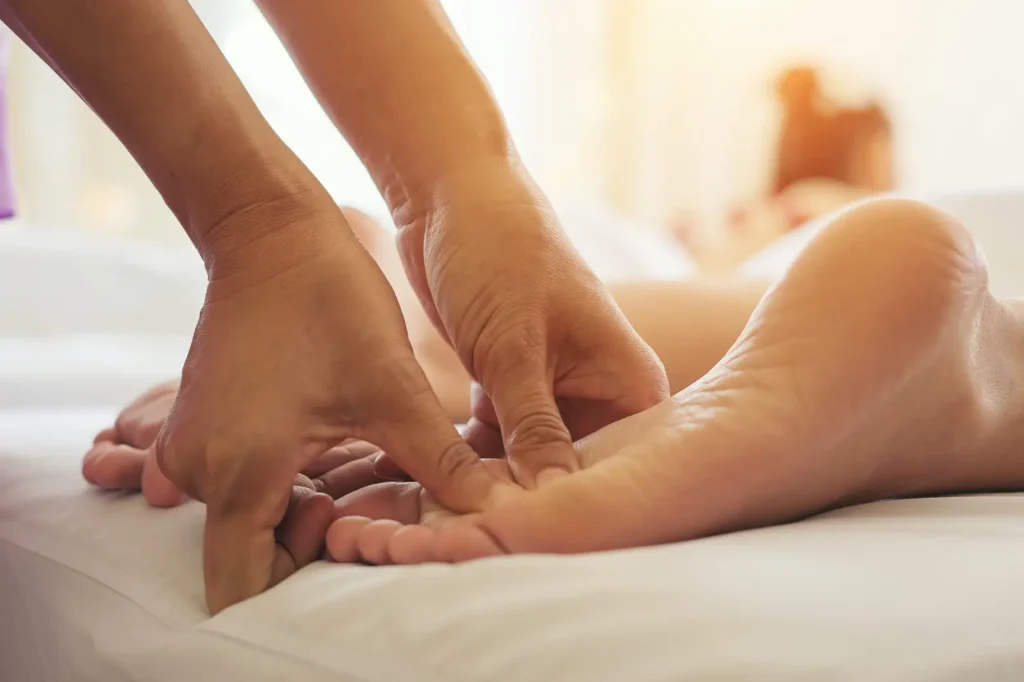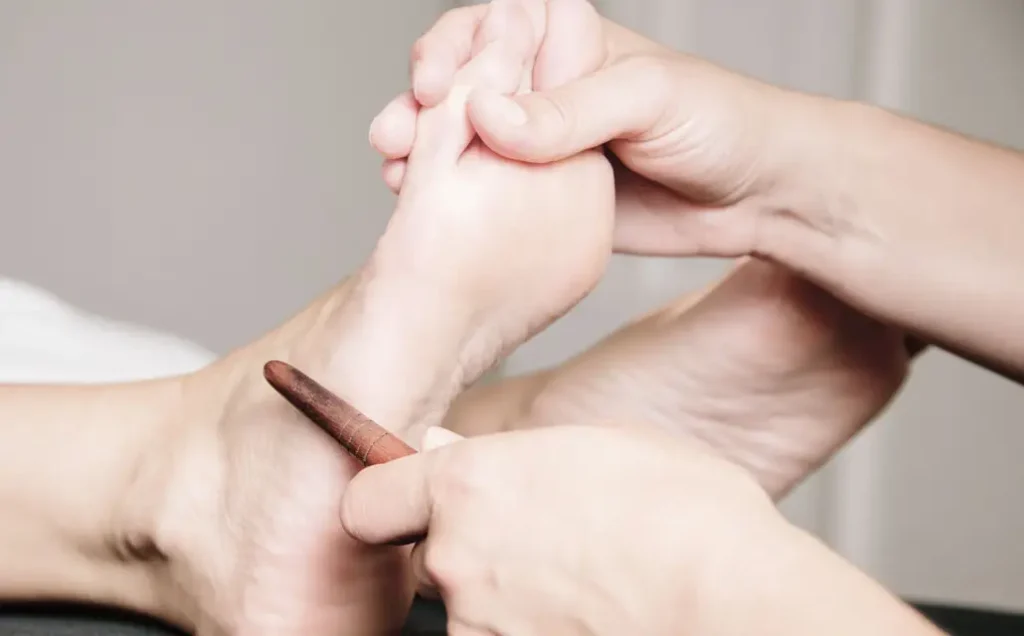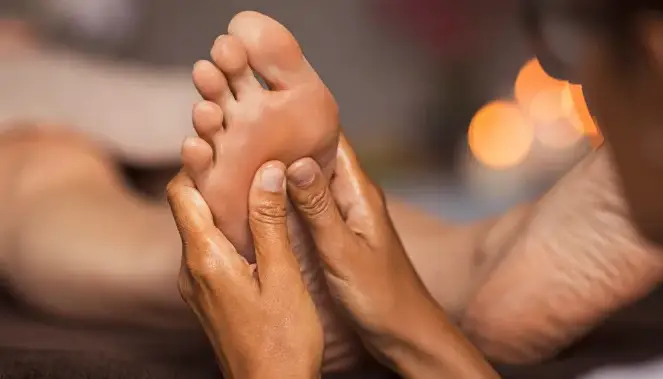Reflexology: Unique 5 Potential Benefits of Reflexology
What Is Reflexology?
A Brief History
Reflexology isn’t a trendy wellness buzzword that appeared last week. It’s an ancient healing technique dating back to ancient Egypt and China. Historians have discovered images of people receiving foot massages in Egyptian tombs dating back to 2330 B.C. Traditional Chinese medicine posits that reflex points on the feet and hands correspond to organs and systems throughout the body.
How It Works
Think of your body like a high-tech circuit board; your feet are the master control panels. Reflexology operates on the principle that specific points on the feet (and hands) are linked to corresponding areas of the body. Applying pressure to these points stimulates healing and promotes physiological balance, not just temporary comfort.

Understanding the Science Behind Reflexology
Reflex Points and Their Importance
Every toe, heel, and arch of your foot is mapped out to correspond with different organs and glands. These reflex points are like GPS coordinates for your body. Stimulating them can send signals through your nervous system to help rebalance your health.
The Nervous System Connection
Applying pressure to reflex points stimulates over 7,000 nerve endings in each foot. This neural stimulation can boost your overall nervous system function, helping you feel more centered, relaxed, and alive.
Benefit #1: Stress Reduction
How Reflexology Calms the Mind
We all know stress is the silent killer. But what if relief was right under your feet? Reflexology helps soothe your nervous system by stimulating pressure points associated with the adrenal glands, heart, and brain. It triggers the body’s relaxation response, lowering heart rate and blood pressure.
Hormonal Balance and Cortisol Levels
Too much cortisol, your stress hormone, can wreak havoc on your health. Reflexology helps your body regulate hormone production, especially in the endocrine system. With consistent sessions, many people report feeling calmer, sleeping better, and reacting less to everyday stressors.

Benefit #2: Improved Circulation
Enhancing Blood Flow
Stuck in a chair all day? Your blood flow might be as sluggish as a Monday morning. Reflexology can help increase circulation by stimulating the muscles and arteries in your feet, encouraging blood to flow more freely throughout your body.
Oxygen Distribution and Energy Levels
More blood flow means more oxygen delivery to your organs and tissues. That means more energy, quicker recovery, and better overall vitality—without needing three cups of coffee to get through the afternoon.
Benefit #3: Pain Relief
Targeting Chronic Pain
Whether it’s lower back pain, arthritis, or fibromyalgia, many people turn to reflexology as a natural alternative to painkillers. Stimulating foot zones linked to painful areas can help block pain signals to the brain and release endorphins—your body’s natural painkillers.
Migraines and Headaches
Is your head throbbing again? Reflexologists often focus on the big toes, which are areas connected to the head and brain. Applying pressure here can relieve migraine symptoms, tension headaches, and even eye strain.

Benefit #4: Better Sleep
Addressing Insomnia Naturally
Can’t fall asleep? Reflexology can help by stimulating the pineal gland, which regulates the production of melatonin, a hormone essential for sleep. It helps quiet your mind and gets your body into a relaxed, sleep-ready state.
Relaxation and Sleep Cycles
Regular reflexology sessions can help reset your circadian rhythm, enabling you to fall asleep faster and stay asleep longer—no more tossing and turning or counting imaginary sheep.
Benefit #5: Enhanced Nerve Function
Nerve Stimulation Techniques
Nerve endings can dull over time, especially as we age or deal with chronic illness. Reflexology acts like a workout for your nerves. It wakes up sluggish nerve pathways, improving communication between body systems.
Neuropathy and Reflexology
For those with diabetes or nerve damage, reflexology may offer gentle relief. Studies suggest it can improve nerve sensitivity and reduce discomfort, particularly in the feet and hands.
Reflexology vs. Massage Therapy
Key Differences
The massage focuses on relaxing muscles, while reflexology targets pressure points to stimulate healing and promote internal balance. Both feel great, but they serve different purposes.
When to Choose Which
If you’re sore from working out, go for a massage. But if you’re dealing with stress, hormone issues, or sleep trouble, reflexology might be the better choice.
Is Reflexology Safe?
Potential Risks and Considerations
Reflexology is generally considered safe, but it may not be suitable for everyone. If you’re pregnant, have blood clots, or foot injuries, consult your doctor first. Some people may feel lightheaded or emotional after sessions—this is part of the body’s natural detox process.
Who Should Avoid Reflexology?
Individuals with severe circulatory issues, infections, or open wounds on their feet should avoid this activity. Always consult a licensed reflexologist to determine if it’s suitable.
How to Get Started with Reflexology
DIY at Home
Want to dip your toes into reflexology? Try rolling a golf ball under your foot or gently pressing your thumb against the arch for a few minutes. Even 5–10 minutes can make a difference.
Finding a Professional Reflexologist
Search local directories or platforms, such as the Reflexology Association of America, to find certified practitioners. Look for reviews and credentials to ensure a quality experience.

Final Thoughts
Reflexology offers more than just a foot massage. It’s a centuries-old therapy that can support modern health challenges—from stress to sleep issues, chronic pain, and nerve function. Whether you’re a skeptic or a believer, there’s no harm in giving it a try. Who knew wellness could be just a step away?
FAQs
1. How long does a it session last?
Utmost sessions last between 30 and 60 minutes. You can indeed do quick 10-nanosecond bottom sessions at home for diurnal benefits.
2. How often should I get reflexology treatments?
Once a week is ideal for general wellness. Two to three sessions a week may be recommended if you’re addressing specific issues.
3. Is it painful?
Not usually. Some spots might feel tender, but it should never feel painful. Think of it as a deep, purposeful pressure.
4. Can I do it during pregnancy?
Consult your OB-GYN first. Some reflex points are believed to trigger contractions, so caution is key during pregnancy.
5. Does it work, or is it just a placebo?
While some benefits may seem subjective, research supports the role of reflexology in reducing stress, improving circulation, and alleviating pain. Placebo or not, if it helps, you win.
Learn More: Energy Healing: A Beginner’s Guide!



